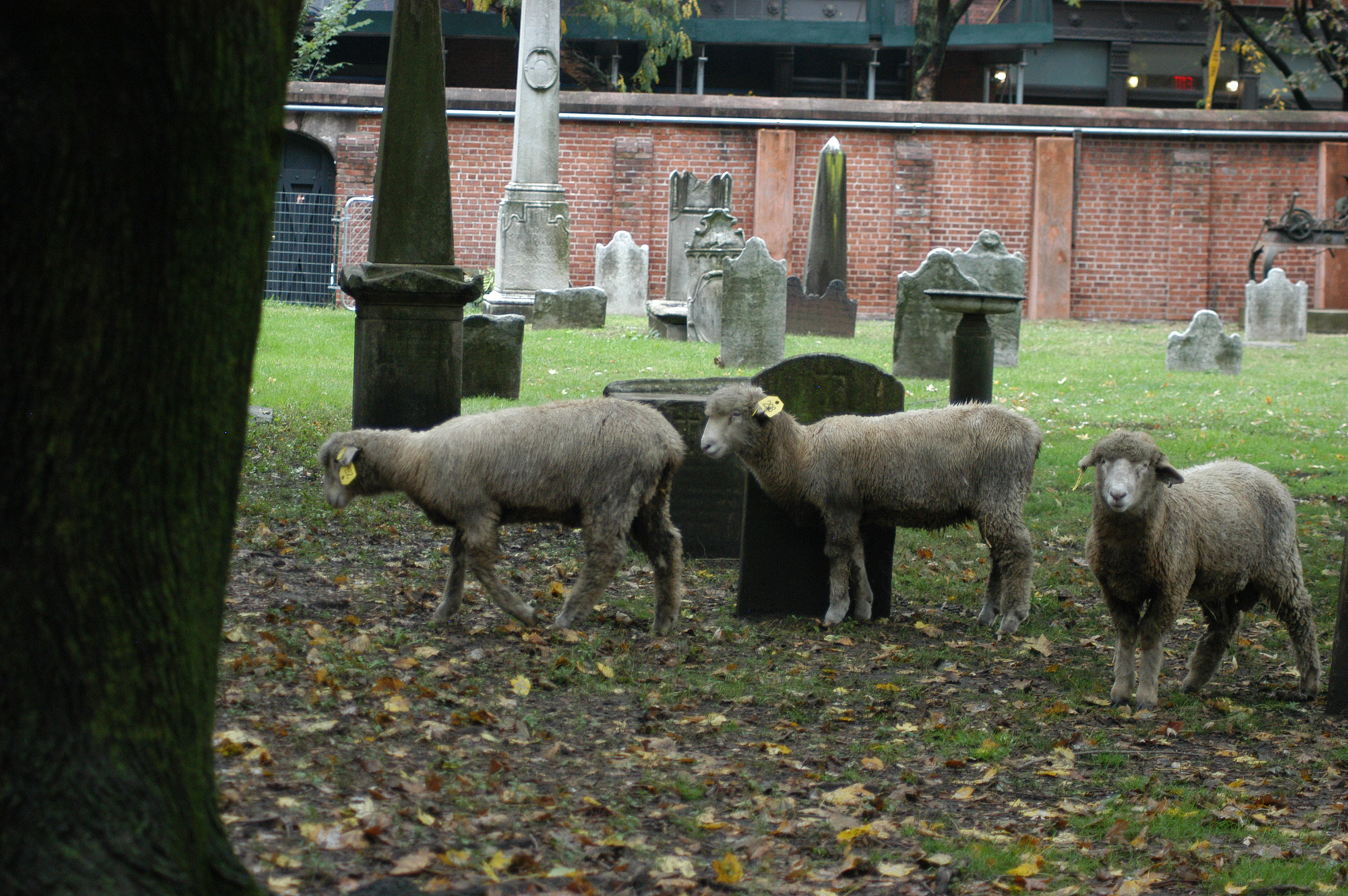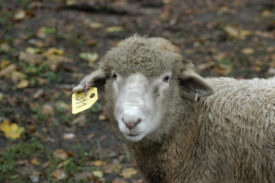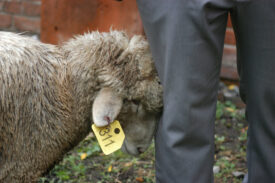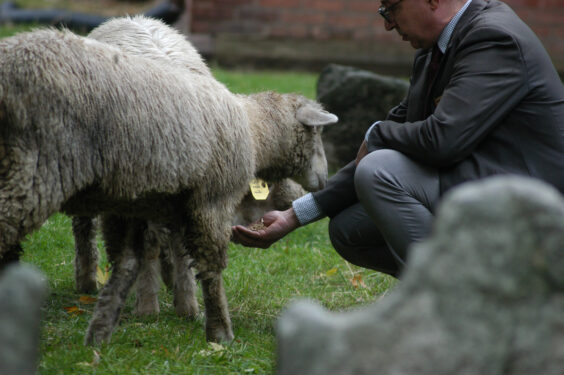
SOHO — This fall, the Basilica of St. Patrick’s Old Cathedral has welcomed three special fleece-covered guests, who roam the cemetery behind the landmark church, offering a rare sight to onlookers walking along Mott St.

The “SoHo Sheep” — named Patrick, Faustina, and Fleece Witherspoon by the top donors that have helped finance their stay at the basilica — are back there, for the first time since the start of the COVID pandemic. They’re restoring a tradition that dates back to 2014, in which the trio of lambs graze in the grass in the church’s North Cemetery, bringing a feeling of peace to the historic church grounds.
The cemetery has been their home since the start of September, and church staff hope to keep them on the grounds through November.
These sheep act as “lambscapers” of the cemetery, said Tommy Wilkinson, the president of Tommy’s New York, the company that conducts tours at the Basilica of St. Patrick’s Old Cathedral. Gravestones in the North Cemetery, adjacent to the landmark church, date back to the 19th century, when it was originally built.
Visitors can watch as the sheep munch the greenery and nuzzle the sandstone markers, the names on some worn away with the passage of time, in the tranquil graveyard.

“It’s really nice to be able to break up the monotony of New York,” Wilkinson said of the scene.
The tradition began when the basilica was undergoing a complete transformation from 2013-16. When construction began, Msgr. David Sakano, the pastor of the basilica at the time, jokingly said he would get sheep to keep the grass short. A few months later, he seriously put that plan into action.
Patrick, the only male of the three sheep, is named after St. Patrick in honor of the patron saint of the church. Faustina was named for St. Faustina, while Fleece Witherspoon is a clever play on the name of famous actress Reece Witherspoon. From 2017-19, Tommy’s New York was responsible for the management of the sheep, and Wilkinson has been their shepherd and caretaker.
After the pandemic made live animals unavailable to the church, Wilkinson was initially unsure if the tradition at the basilica could resume. However, this past August, he got the call from a farm in the Hamptons notifying him that lambs would be available, and he and the church staff quickly began preparing the grounds for the return of the sheep. That process included moving the shelter where the animals had been housed closer to the center of the cemetery, more visible to visitors who come to see them.
The symbolism of the sheep is not lost on Msgr. Sakano. John the Baptist calls Jesus the “Lamb of God,” and St. Peter says in his first letter that Christians are sheep in the flock of God.
“It generates all sorts of interaction with neighbors as well as visitors who come out of their way to see the sheep,” Msgr. Sakano said. “It just created a sort of interchange.”
Christine Cerabone, who lives near the basilica, has made frequent visits over the years to see the sheep. She has often attended Mass at Old St. Patrick’s and feels her religious connection helps her understand the symbolism of the sheep being at the North Cemetery.
“I don’t think anyone who’s not Catholic would understand it, the shepherd part of it,” she said. “The significance of the sheep is not just to eat the grass.”

